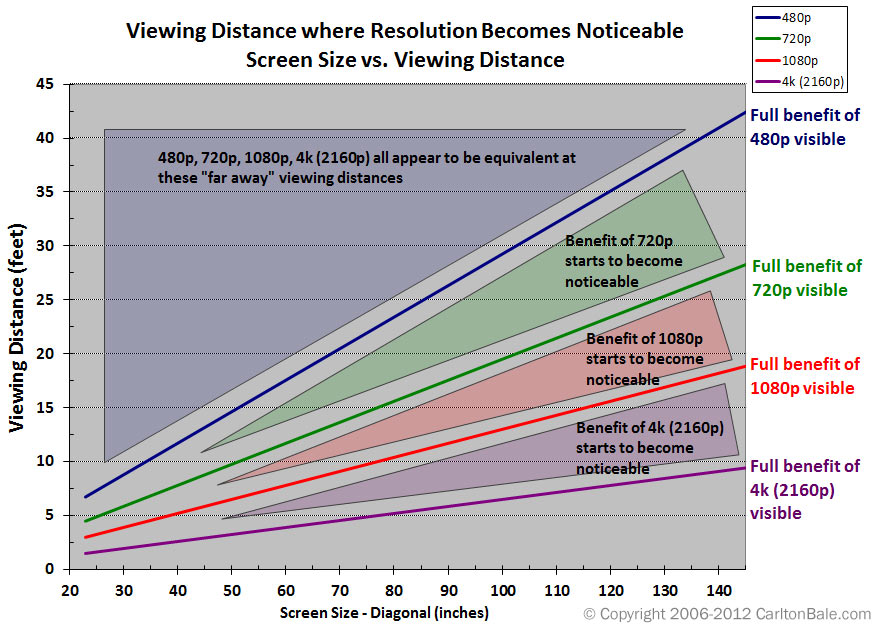I think age makes a big difference, too. I'm over 50 and I've never been able to really tell between 720p and 1080i and 1080p, much less higher resolutions. And I'm nearsighted.
Technology
This is a most excellent place for technology news and articles.
Our Rules
- Follow the lemmy.world rules.
- Only tech related news or articles.
- Be excellent to each other!
- Mod approved content bots can post up to 10 articles per day.
- Threads asking for personal tech support may be deleted.
- Politics threads may be removed.
- No memes allowed as posts, OK to post as comments.
- Only approved bots from the list below, this includes using AI responses and summaries. To ask if your bot can be added please contact a mod.
- Check for duplicates before posting, duplicates may be removed
- Accounts 7 days and younger will have their posts automatically removed.
Approved Bots
4k is definitely a big improvement over 1080p. The average person probably doesn't have good eyesight, but that doesn't mean that it's a waste for everyone else.
It does make a difference for reading text like subtitles or navigating game menus.
Kind of a tangent, but properly encoded 1080p video with a decent bitrate actually looks pretty damn good.
A big problem is that we've gotten so used to streaming services delivering visual slop, like YouTube's 1080p option which is basically just upscaled 720p and can even look as bad as 480p.
Yeah I'd way rather have higher bitrate 1080 than 4k. Seeing striping in big dark or light spots on the screen is infuriating
I have friends and family with good eyesight and they can tell a difference. Sadly even with Recent prescription lenses I still can't see a difference. Eh, at least I can save on TV's since 1080p is cheaper.
I know I am a display tech nerd, but can people really not tell the difference? Even going from a 1440p to a 4k monitor to me was a very noticeable improvement to clarity. And there's a huge difference in the way that games look on my living room TV in 1080p compared to 4k.
The study used a 44 inch TV at 2.5m. The most commonly used calculator for minimum TV to distance says that at 2.5m the TV should be a least 60 inches.
My own informal tests at home with a 65 inch TV looking at 1080 versus 4K Remux of the same movie seems to go along with the distance calculator. At the appropriate distance or nearer I can see a difference if I am viewing critically (as opposed to casually). Beyond a certain distance the difference is not apparent.
Exactly. This title is just clickbait.
The actual study's title is "Resolution limit of the eye — how many pixels can we see?".

I can pretty confidently say that 4k is noticeable if you're sitting close to a big tv. I don't know that 8k would ever really be noticeable, unless the screen is strapped to your face, a la VR. For most cases, 1080p is fine, and there are other factors that start to matter way more than resolution after HD. Bit-rate, compression type, dynamic range, etc.
Heh, I'm getting back to physical media, and this big 4K TV is literally the first time ever where I've actually constantly noticed that DVDs might get a bit pixely.
(And even so, I usually blame not so great digitisation. Some transfers of old obscure titles were really sloppy, you really didn't need a great TV to see the problems. Original was a black and white movie, the DVD was a bunch of grey mush.)
OP, please update the post to reflect the current article title. It may have changed since you posted.